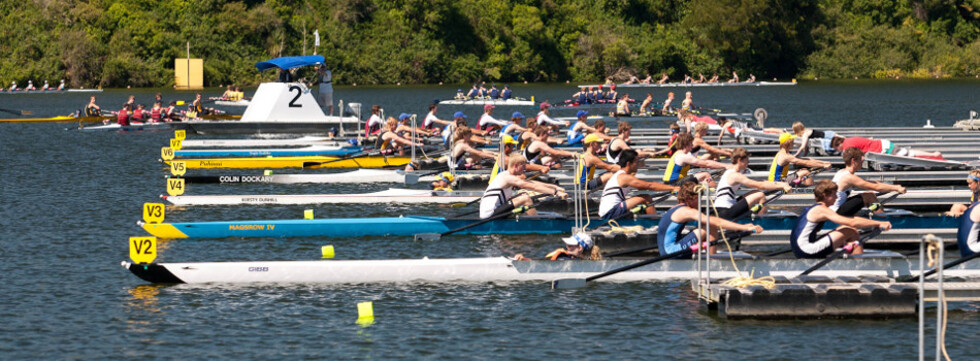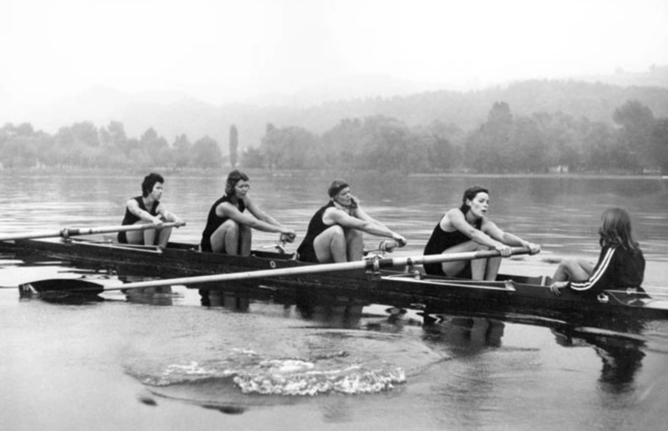Did you know that it wasn't until 1974 that NZ had a women's crew at the World Champs?
March 8 is international women's day. Over the next few days we will be sharing some stories about women in our region who are making a difference in our clubs. While women are approximately 50% of the competitors on the water, off the water it is not quite the same. For example our committee currently has 2 women out of the 8 members, Monique Venn our secretary and Catherine Stapleton. Even though they have the support and enjoy working with the men on the committee, it does mean that how we best support women in rowing (on and off the water) may not be well understood, and is why you may hear about the Waikato Women in Rowing initiative this winter.
Our first story we would like to share is about the journey of the first women's crew to represent NZ at the World champs. It mentions the establishment and disestablishment of the women's rowing association, and features a local coxswain from Te Awamutu. Article sourced from the NZ Rowing Foundation website.
In the winter of 1974 four women could be found slipping their oars into the foggy waters of Kerrs Reach each morning, steadily clocking up kilometers and constantly chasing the perfect stroke under the guidance of their keen young coxswain – determined to prove they were good enough for New Zealand selection.
The 1974 crew of Marion Horwell, Robyn Matheson, Elizabeth Cato, Lesley Milne (nee Keys), along with coxswain Vicki Colville became the first New Zealand women’s crew to represent New Zealand at the World Championships.
The New Zealand Rowing Foundation and Rowing New Zealand were delighted to award these five women their Legacy Medals at a special presentation during the 2020 Rocket Foods New Zealand Rowing Championships. Below you can read about their journey to race at the World Championships on Lake Lucerne in Switzerland.
The path had not been easy for the crew, they had been through a rigorous trial, and once selected – had to prove themselves again by completing a time trial. They had also faced opposition because they were women along with the wider issue of funding which was a challenge right across the sport.
Their journey began following the National Championships in 1974 when a group of women were invited to a selection camp in Wanganui. First an erg test was carried out, then psychological testing run by Otago University followed by lengthy on water trials in eights run by NZ selector Fred Strachan and finally one-on-one interviews with the selectors.
Horwell, Matheson, Cato and Milne, were selected as a coxed four and were then invited to relocate to Christchurch where they would train under the guidance of coach Rusty Robertson. After a few weeks training they were given the opportunity to race a time trial that would determine whether they were good enough to race in Lucerne at the World Championships.
A trial was also held for a coxswain with 14 year old Colville from Te Awamutu securing the spot, ‘I was very lucky to be selected and I just got on with it. I think I was a bit young to understand how special it was.’
The crew trained on the Avon River morning and night for nine weeks through the winter. On top of the on-water sessions the crew also completed home exercises after the rows, wind sprints at the local park and weekly weights sessions alongside the men’s crews. Robertson was quoted as saying, ‘The thing that has impressed me is their keenness, and this counts so much towards developing a good crew.’
One of the major differences between rowing in 1974 compared with the modern era was the necessity for the rowers to work alongside their training. Horwell and Matheson both worked in banks while Cato was a schoolteacher and Milne found both cleaning and clerical work to make ends meet. Coxswain Vicki Colville attended Papanui High school.
On top of this Matheson said they also had to fundraise in order to pay for their overseas tours, ‘Fundraising was such a big part of rowing, we used to do strange things: mowing lawns, collecting bottles, but it instilled a ‘can-do’ attitude. We all raised the money together.’
While each of the woman attest to many people, both male and female, that supported them at the time, they faced some strong resistance. One newspaper story at the time claimed ‘some members of the rowing fraternity were opposed to sending a national women’s coxed four… they would rather see another men’s crew competing overseas.’ The arguments against sending a women’s crew included: the fact that ‘In Europe the heights of the women are just the same as the men and that the women would be outclassed before they even took to the water’ and also ‘if the crew was sent and easily beaten the result would weaken the chance of other female crews competing overseas.’
A New Zealand Herald article even stated that, ‘women oarsmen have been seen as a necessary evil but women’s rowing events have now been added to the Olympics and World Championship events…’
Milne remembers that being selected by the New Zealand selectors in itself was a coup, ‘…there were so many rowing people against women rowing. Money was tight, so why send a women’s crew? Having been selected, it didn’t mean that we were automatically going to compete overseas.’
Matheson points out that 55 years ago ‘all rowers were amateurs with no payment or endorsements, male or female.’ She also said that from her point of view, ‘The sexism that was in rowing was in all aspects of life then. Because we didn’t really know any different we pretty much ignored it. We loved the sport and at the time rowing was everything to me so overcoming obstacles was just part of it.’
Women’s rowing in New Zealand had been steadily building since the early 1900’s but in 1966 The NZ Women’s Rowing Association was formed breathing life into women’s rowing with the formation of a formal body. Finally in 1974 women were included into the NZ Amateur Rowing Association constitution and the NZWRA was dissolved with the main reason behind the change in attitude the fact that women’s rowing had been accepted as an Olympic sport.
It must be acknowledged that prior to 1974 three crews represented New Zealand in Australia and Elizabeth Cato, winner of the Australian single sculls title had also gained approval from NZ selectors to compete for New Zealand at the European Championships, in Germany two years earlier.
The women’s coxed four went on to finish 3rd in the B final at the 1974 World Rowing Championships on Lake Lucerne. The crew were notably disappointed that they weren’t able to make the A final but the experience gained was immeasurable and their presence significant in building towards the success of women’s rowing in New Zealand in the modern era.
Milne reflected on the disappointment they felt over their final result, ‘A big challenge was the huge responsibility we felt being the first crew selected to row at a World Championship. We had been told that the future of women’s rowing in New Zealand rested on our shoulders. I can clearly remember the despair we felt when we didn’t reach the final and how utterly dejected we were as we thought that we had let women rowers and NZ Rowing, down. ‘
On the contrary, this 1974 four crew showed great tenacity, courage and grit on this first outing for New Zealand women on the world stage and were part of the beginnings of the legacy of women’s rowing. In 2019, we saw the New Zealand women’s eight gain world champion status all because of these and other pioneering women who strived to represent their country doing something they loved and in doing so achieved parity for women’s rowing in New Zealand.

